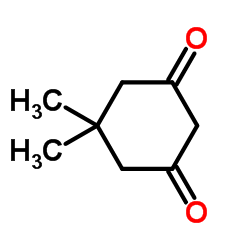Sphaeropsidones, phytotoxic dimedone methyl ethers produced by Diplodia cupressi: a structure-activity relationship study.
Antonio Evidente, Lucia Maddau, Bruno Scanu, Anna Andolfi, Marco Masi, Andrea Motta, Angela Tuzi
Index: J. Nat. Prod. 74(4) , 757-63, (2011)
Full Text: HTML
Abstract
Sphaeropsidone and episphaeropsidone are two phytotoxic dimedone methyl ethers produced by Diplodia cupressi, the causal agent of a canker disease of cypress in the Mediterranean area. In this study, eight derivatives obtained by chemical modifications and two natural analogues were assayed for phytotoxic and antifungal activities, and a structure-activity relationship was examined. Each compound was tested on nonhost plants and on five fungal pathogenic species belonging to the genus Phytophthora. The results provide insights into structure-activity relationships within these compounds. It was found that the hydroxy group at C-5, the absolute C-5 configuration, the epoxy group, and the C-2 carbonyl group appear to be structural features important in conferring biological activity. The conversion of sphaeropsidone into the corresponding 1,4-dione derivative led to a compound showing greater antifungal activity than its precursor. This finding could be useful in devising new natural fungicides for practical application in agriculture.
Related Compounds
| Structure | Name/CAS No. | Molecular Formula | Articles |
|---|---|---|---|
 |
Dimedone
CAS:126-81-8 |
C8H12O2 |
|
[The role of aldehydes in development of oxidative stress un...
[Fiziol. Zh. 59(1) , 25-31, (2013)] |
|
Thiol-blocking electrophiles interfere with labeling and det...
2013-12-01 [FEBS J. 280(23) , 6150-61, (2013)] |
|
Open season for hunting and trapping post-translational cyst...
2011-04-11 [ChemBioChem. 12(6) , 841-4, (2011)] |
|
"Danger" conditions increase sulfamethoxazole-protein adduct...
2009-11-01 [J. Pharmacol. Exp. Ther. 331(2) , 372-81, (2009)] |
|
Formation and reactions of sulfenic acid in human serum albu...
2010-01-01 [Meth. Enzymol. 473 , 117-36, (2010)] |